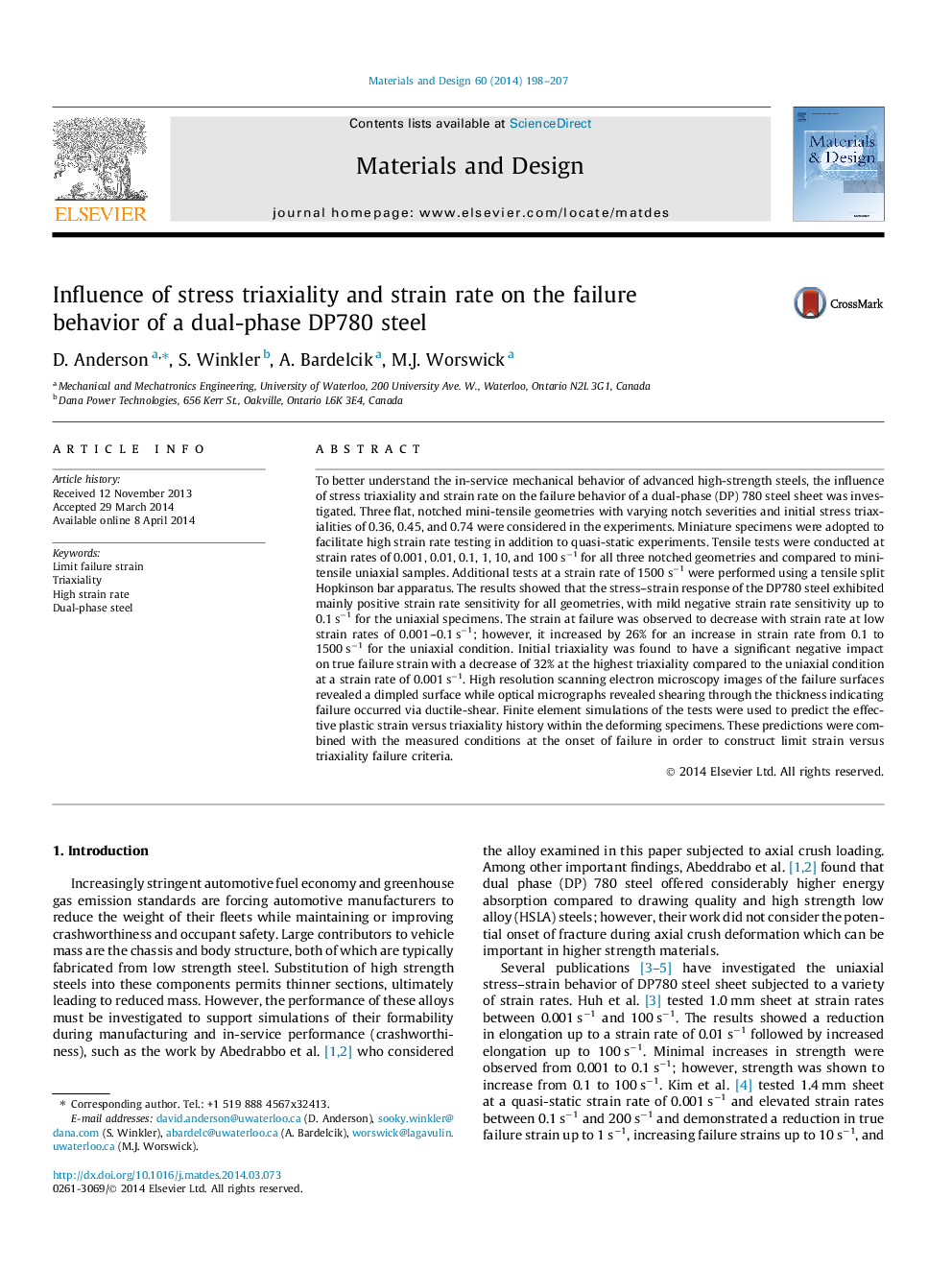| کد مقاله | کد نشریه | سال انتشار | مقاله انگلیسی | نسخه تمام متن |
|---|---|---|---|---|
| 829186 | 1470337 | 2014 | 10 صفحه PDF | دانلود رایگان |

• DP780 steel sheet sensitive to strain rate and triaxiality.
• Specimens failed due to ductile-shear mode.
• Extent of transverse cracking due to martensitic islands increased with triaxiality.
• Uniaxial stress decreased with strain rate then increased after 0.1 s−1.
• Predicted effective plastic strain, triaxiality at failure increased with strain rate.
To better understand the in-service mechanical behavior of advanced high-strength steels, the influence of stress triaxiality and strain rate on the failure behavior of a dual-phase (DP) 780 steel sheet was investigated. Three flat, notched mini-tensile geometries with varying notch severities and initial stress triaxialities of 0.36, 0.45, and 0.74 were considered in the experiments. Miniature specimens were adopted to facilitate high strain rate testing in addition to quasi-static experiments. Tensile tests were conducted at strain rates of 0.001, 0.01, 0.1, 1, 10, and 100 s−1 for all three notched geometries and compared to mini-tensile uniaxial samples. Additional tests at a strain rate of 1500 s−1 were performed using a tensile split Hopkinson bar apparatus. The results showed that the stress–strain response of the DP780 steel exhibited mainly positive strain rate sensitivity for all geometries, with mild negative strain rate sensitivity up to 0.1 s−1 for the uniaxial specimens. The strain at failure was observed to decrease with strain rate at low strain rates of 0.001–0.1 s−1; however, it increased by 26% for an increase in strain rate from 0.1 to 1500 s−1 for the uniaxial condition. Initial triaxiality was found to have a significant negative impact on true failure strain with a decrease of 32% at the highest triaxiality compared to the uniaxial condition at a strain rate of 0.001 s−1. High resolution scanning electron microscopy images of the failure surfaces revealed a dimpled surface while optical micrographs revealed shearing through the thickness indicating failure occurred via ductile-shear. Finite element simulations of the tests were used to predict the effective plastic strain versus triaxiality history within the deforming specimens. These predictions were combined with the measured conditions at the onset of failure in order to construct limit strain versus triaxiality failure criteria.
Journal: Materials & Design - Volume 60, August 2014, Pages 198–207